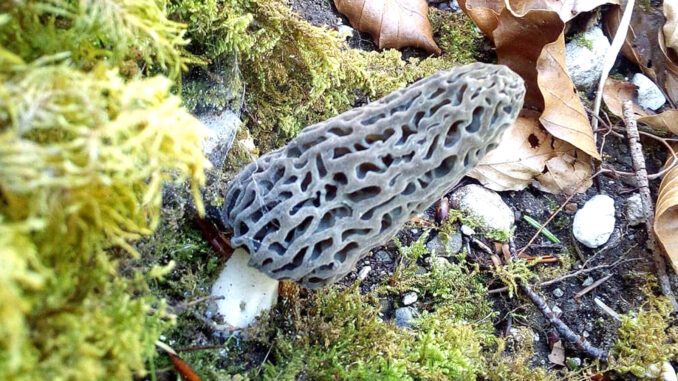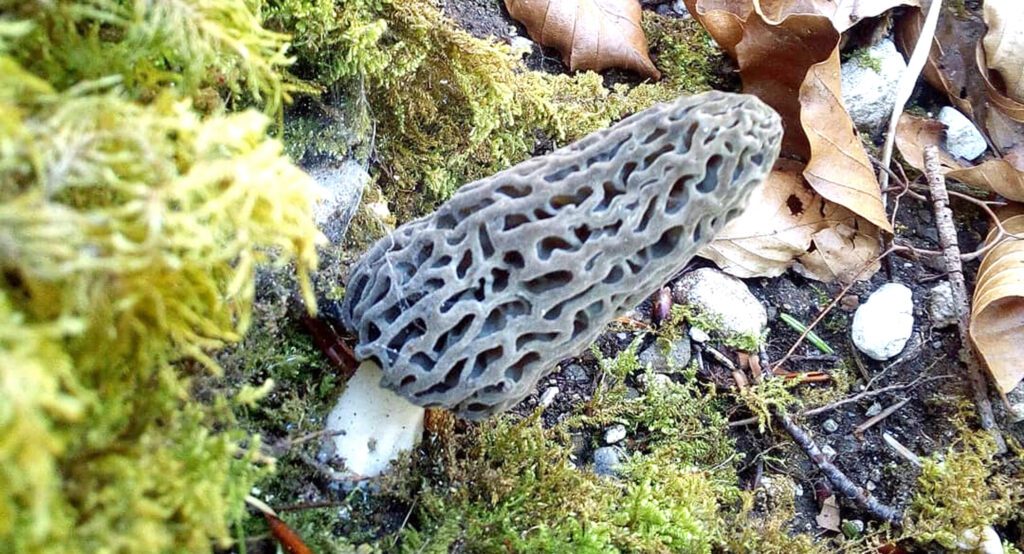
Do you want to know under which trees black morels grow? Discover in this article the best trees to find them!

There are many types of morels, and each has preferences for specific tree associations. They occur as solitary individuals or in scattered groups from late April to early June, depending on the state.
However, before going further, you should know that there are two main types of morels: yellow morels and black morels.
In this article, we will exclusively focus on the relationship between black morels and trees.
Discover the most favorable areas for black morels directly through our Mushroom Maps available here!
Best Trees For Black Morels
There are over 10 varieties of black morels distributed unevenly across the American territory. Hence, the first observation we can make is that black morels will not grow under the same trees depending on the state we are in.
Let’s take a few examples of black morels to better understand the black morel-tree associations:
Black Morel Augusticeps (Morchella Augusticeps)
This black morel will primarily grow under deciduous trees such as, for example:
- ash
- cherry
- aspen
- tulip trees
Black Morel Septentrionalis (Morchella Septentrionalis)
The black morel septentrionalis, will also grow under hardwoods such as, for example:
- aspen
- ash
- other hardwoods
Black Morel Brunnea (Morchella Brunnea)
It is more challenging to attribute specific trees to this black morel. Indeed, this morel will grow under various trees, whether they are hardwoods or conifers.
Burn Morel
Another type of black morel that we absolutely must address in this article is the “burn-site black morel”! Morels of this type will exclusively grow in recently burned areas.
Among the black morels included in this category, we could mention the following morels, which grow exclusively under burned trees: M. sextelata, M. septimelata, M. tomentosa, and M. capitata.
Find Morels With Our Maps!
Want to know where the best morel spots are in your state? Discover it with our morel maps here!
Leave a Reply